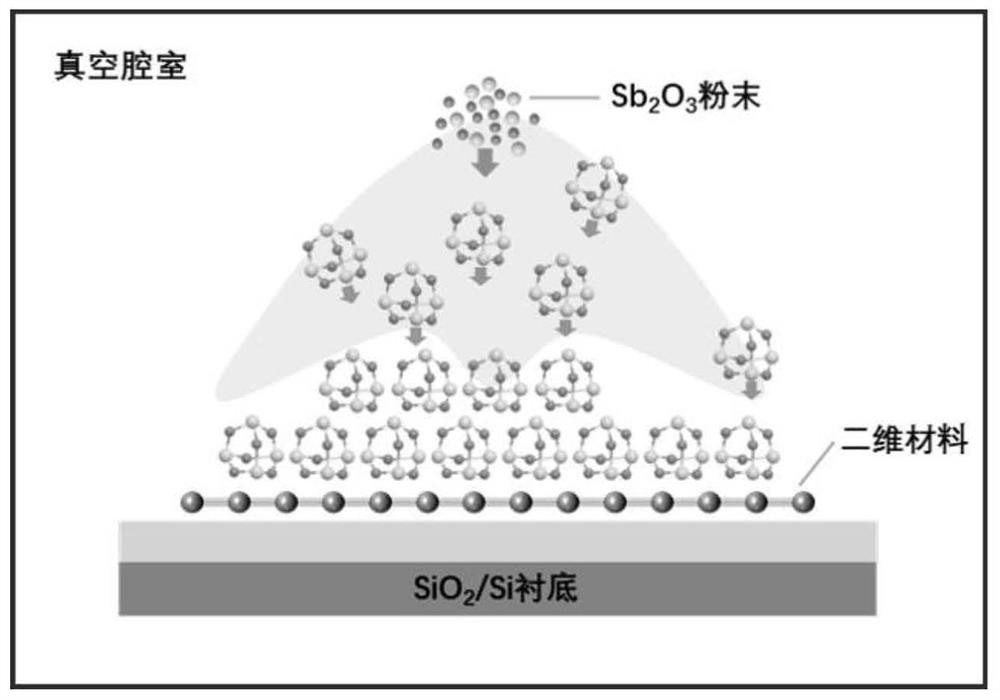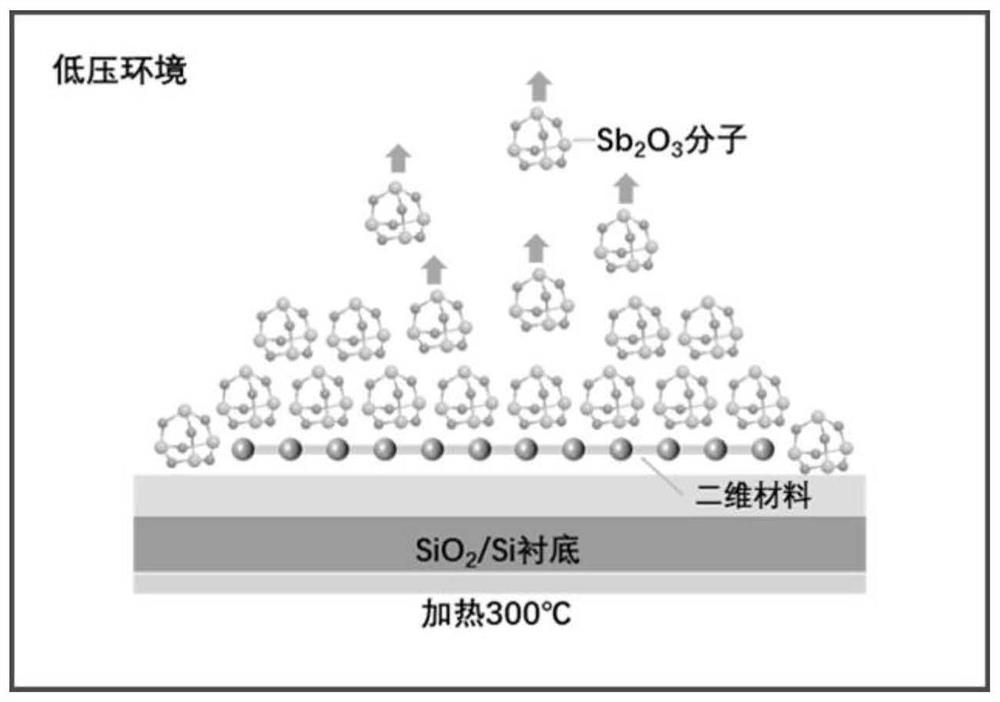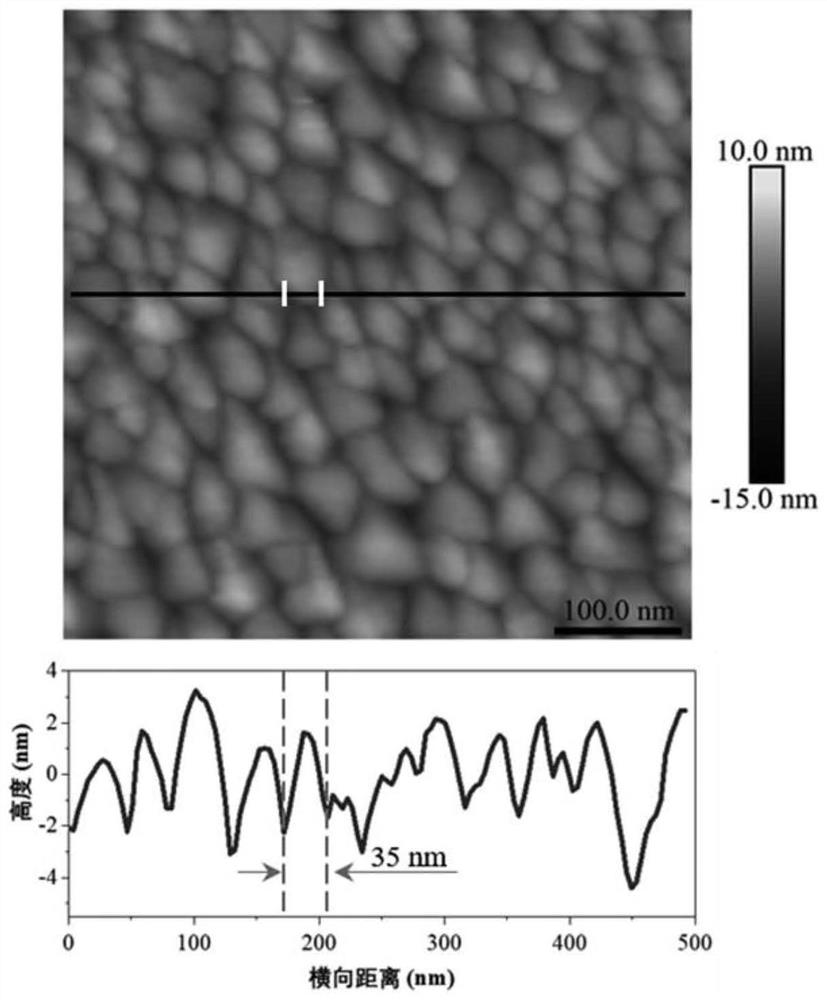Structure for packaging two-dimensional material by using inorganic molecular crystal and packaging and de-packaging method thereof
An encapsulation method and technology of two-dimensional materials, applied in the field of nanomaterials, can solve the problems of complex operation, large residual pollution, and difficulty in achieving scale, and achieve the effect of simple processing technology, broad market prospects, and universality.
- Summary
- Abstract
- Description
- Claims
- Application Information
AI Technical Summary
Problems solved by technology
Method used
Image
Examples
Embodiment 1
[0043] Example 1Sb2 o 3 Encapsulation and decapsulation on graphene surface as inorganic molecules
[0044] Sb 2 o 3 Encapsulation method of graphene as inorganic molecular encapsulation, such as figure 1 shown, including the following steps:
[0045] (1) Sb is coated by a high vacuum coating machine 2 o 3 Sublimation forms a gaseous inorganic molecular atmosphere, maintains a vacuum state during the reaction, and maintains a reaction pressure of 10 -6 Torr, the sublimation temperature is 300°C and the deposition temperature is 25°C.
[0046] (2) Deposit gaseous inorganic molecules on the surface of graphene to form a protective layer, and the graphene is mechanically stripped to SiO 2 / Si substrate, the deposition rate is controlled as The deposition time is set to 1000s, and the 20nm Sb 2 o 3 Graphene covered by a thin film.
[0047] Unpack the encapsulated graphene, such as figure 2 shown, will be Sb 2 o 3 Film-encapsulated graphene is placed in a horizontal...
Embodiment 2
[0048] Examples 2-4 have the same operation steps as Example 1, the main difference is that the two-dimensional materials are different, and Example 2 chooses MoS prepared by mechanical exfoliation 2 As the encapsulated two-dimensional material, embodiment 3 selects WSe prepared by mechanical exfoliation 2 As the encapsulated two-dimensional material, embodiment 4 selects TaS prepared by mechanical exfoliation 2 as an encapsulated two-dimensional material.
Embodiment 5
[0049] Embodiment 5-6 is identical with embodiment 1 operation steps, and main difference is that the inorganic molecular crystal is different, and wherein embodiment 5 is S 8 , embodiment 6 is P 4 Se 3 , embodiment 7 is GeI 4 . Examples 8-9 have the same operation steps as Example 1, the main difference is that the deposition rate and deposition thickness of thermal evaporation are different. The table of main parameters of Examples 1-9 of the present invention is shown in Table 1.
[0050] Table 1 embodiment parameter table
[0051]
PUM
 Login to View More
Login to View More Abstract
Description
Claims
Application Information
 Login to View More
Login to View More - R&D
- Intellectual Property
- Life Sciences
- Materials
- Tech Scout
- Unparalleled Data Quality
- Higher Quality Content
- 60% Fewer Hallucinations
Browse by: Latest US Patents, China's latest patents, Technical Efficacy Thesaurus, Application Domain, Technology Topic, Popular Technical Reports.
© 2025 PatSnap. All rights reserved.Legal|Privacy policy|Modern Slavery Act Transparency Statement|Sitemap|About US| Contact US: help@patsnap.com



